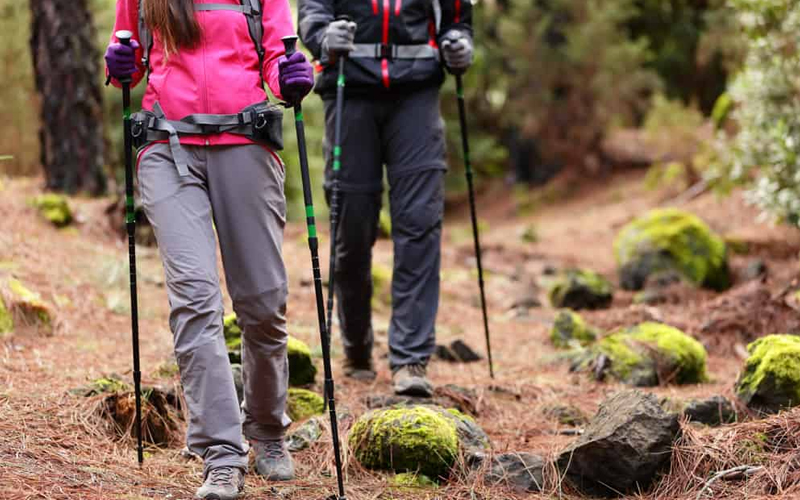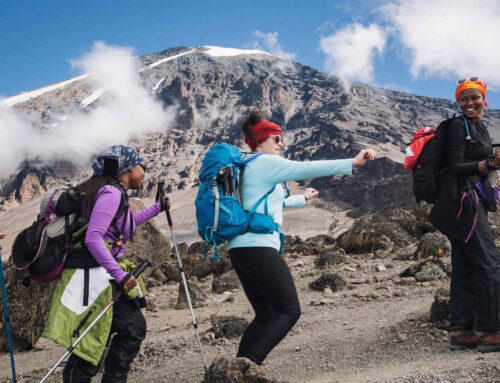Embarking on a journey to summit Mount Kilimanjaro is a thrilling adventure, but it requires careful preparation, especially when it comes to gear. The right equipment can make all the difference between a successful climb and a challenging ordeal. Here’s a comprehensive guide to the essential gear you’ll need for Kilimanjaro climbing.
Importance of Proper Gear
Proper gear is essential for Kilimanjaro climbing to ensure comfort, safety, and success. The mountain’s varied terrain and unpredictable weather demand gear that can withstand the elements and provide adequate protection.
Overview of Essential Items
From clothing and footwear to equipment and accessories, every piece of gear plays a crucial role in your Kilimanjaro adventure. By carefully selecting and packing the right gear, you’ll be better prepared to tackle the challenges of the climb and fully enjoy the experience.
Clothing
Layering System
A layering system is essential for regulating body temperature and staying comfortable throughout the climb. It consists of moisture-wicking base layers, insulating layers for warmth, and waterproof and windproof outer layers to protect against the elements.
Moisture-Wicking Base Layers
Choose lightweight, moisture-wicking base layers made from materials like merino wool or synthetic fabrics. These will keep you dry and comfortable by wicking sweat away from your skin.
Insulating Layers
Insulating layers, such as fleece jackets or down vests, provide warmth in cold conditions. Opt for lightweight, compressible garments that offer an excellent warmth-to-weight ratio.
Waterproof and Windproof Outer Layers
A waterproof and windproof jacket and pants are essential for protecting against rain, snow, and strong winds. Look for garments with sealed seams and adjustable hoods and cuffs for maximum weather protection.
Headwear and Gloves
A warm hat, neck gaiter, and gloves are essential for preserving heat and preventing heat loss from the head and hands. Choose insulated, moisture-wicking options that provide adequate protection against cold temperatures and wind chill.
Footwear
Sturdy Hiking Boots
Invest in a pair of sturdy hiking boots with ankle support and a grippy outsole for traction on varied terrain. Break them in before the climb to prevent blisters and discomfort.
Socks
Bring several pairs of moisture-wicking socks made from merino wool or synthetic materials. Avoid cotton socks, as they retain moisture and increase the risk of blisters.
Gaiters
Gaiters are essential for keeping snow, rocks, and debris out of your boots. Choose lightweight, waterproof gaiters that can be easily attached to your boots.
Equipment
Backpack
A durable, comfortable backpack with ample storage space is essential for carrying gear and supplies during the climb. Look for a pack with padded shoulder straps, a supportive hip belt, and multiple compartments for organization.
Sleeping Bag and Sleeping Pad
Choose a lightweight, compact sleeping bag rated for cold temperatures to ensure a comfortable night’s sleep at high altitudes. Pair it with a sleeping pad for insulation and cushioning against the hard ground.
Trekking Poles
Trekking poles provide stability and support on steep, uneven terrain and reduce strain on the knees and joints. Look for adjustable, collapsible poles with comfortable grips and durable tips.
Headlamp or Flashlight
A reliable headlamp or flashlight is essential for navigating in low-light conditions and finding your way around camp at night. Make sure to bring extra batteries or a portable charger.
Accessories
Sunglasses
Protect your eyes from the sun’s glare and snow blindness with UV-blocking sunglasses. Choose wraparound styles with polarized lenses for maximum coverage and clarity.
Sunscreen and Lip Balm
Apply sunscreen with a high SPF rating to exposed skin to prevent sunburn and sun damage. Don’t forget to protect your lips with a moisturizing lip balm containing SPF.
Water Bottles or Hydration System
Stay hydrated by carrying plenty of water with you during the climb. Opt for reusable water bottles or a hydration system like a hydration bladder to minimize plastic waste.
Snacks and Energy Bars
Pack lightweight, high-energy snacks like trail mix, energy bars, and dried fruit to fuel your body during the climb. Choose options that are easy to digest and provide sustained energy.
Health and Safety
First Aid Kit
Carry a comprehensive first aid kit containing essentials like bandages, antiseptic wipes, blister pads, pain relievers, and altitude sickness medication.
Medications
Bring any necessary medications, including prescriptions and over-the-counter remedies for common ailments like headaches, upset stomach, and motion sickness.
Diamox (Altitude Sickness Medication)
Consider taking altitude sickness medication like Diamox to prevent or alleviate symptoms of altitude sickness. Consult with a healthcare professional before starting any medication regimen.
Emergency Communication Device
Carry an emergency communication device like a satellite phone or personal locator beacon (PLB) for contacting help in case of emergencies or getting lost.
Other Considerations
Renting vs. Buying Gear
Consider whether to rent or buy gear based on your budget, frequency of use, and personal preferences. While renting can be cost-effective for occasional climbers, investing in high-quality gear may be worthwhile for avid adventurers.
Packing Tips
Pack your gear strategically to maximize space and weight distribution in your backpack. Use compression sacks and packing cubes to organize and compress clothing and gear, and consider leaving non-essential items behind to reduce weight.
Weight Restrictions on the Mountain
Be mindful of weight restrictions imposed by trekking companies or park regulations. Excess baggage can be cumbersome and may incur additional fees or restrictions, so prioritize packing only essential gear.
Embarking on a Kilimanjaro climbing expedition is a once-in-a-lifetime adventure that requires careful preparation and the right gear. By investing in quality clothing, footwear, equipment, and accessories, you’ll ensure a comfortable and successful climb. Remember to pack light, stay hydrated, and prioritize safety at all times. With the proper gear and preparation, you’ll be ready to conquer Africa’s tallest peak and create memories that will last a lifetime.
FAQs
Can I rent gear at the base of Kilimanjaro?
Yes, many outfitters and trekking companies offer gear rental services at the base of Kilimanjaro, including clothing, footwear, and equipment.
How do I know if my boots are suitable for Kilimanjaro?
Choose hiking boots with ankle support, a sturdy outsole, and waterproofing to withstand the varied terrain and conditions on Kilimanjaro.
Is it necessary to bring a sleeping bag?
Yes, a sleeping bag rated for cold temperatures is essential for staying warm and comfortable during cold nights at high altitudes.
What should I do if I forget essential gear?
If you forget essential gear, check with your trekking company or fellow climbers to see if they have spare items you can borrow or rent.
Can I bring my own snacks and energy bars?
Yes, bringing your snacks and energy bars is recommended to fuel your body during the climb. Choose lightweight, high-energy options that are easy to pack and consume on the go.
Explore Tanzania’s awe-inspiring diversity with our exceptional safari tours! Immerse yourself in the iconic Serengeti, where the breathtaking wildlife migration unfolds before your eyes. Traverse the majestic Ngorongoro Crater, a sanctuary of unparalleled biodiversity. Ascend Africa’s highest peak, Kilimanjaro, and marvel at its sweeping landscapes. Venture into the enchanting Tarangire National Park, where ancient baobab trees stand sentinel over herds of majestic elephants. Experience the untamed beauty of Mikumi National Park, where the Big Five roam freely amid diverse habitats. Discover the rugged wilderness of Ruaha National Park, where every corner unveils a new wildlife spectacle. Embark on a journey through the vast Selous Game Reserve, where thrilling boat safaris along the Rufiji River await. After your exhilarating safari adventure, unwind on the pristine beaches of Zanzibar, where turquoise waters lap against powdery white sands. Let us craft an unforgettable Tanzania Safari tour, where every moment is a testament to the wonders of nature.








Leave A Comment